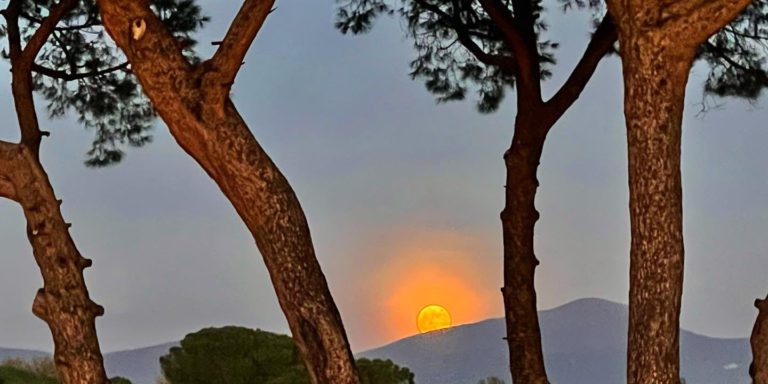
For more images, see our Instagrams:
@wonderbookandvideo
@booksbythefoot
@merryandpippinlotr
Monday, November 22, Naples Airport
Leg 1 of the flight home appears to be in place—so far.
I am through security. My passport and vaccination card and negative COVID test documents have been inspected several times. I got through security quickly. I emptied my pockets, took off my belt and shoes and put everything loose I had into the small Osprey knapsack—after removing my laptop.
Crucial objects:
- Phone
- Laptop
- Passport
- Vax Card
- COVID results paper
Secondary:
- Wallet
- Cash
- Credit cards
- My journal and yellow legal pad with words written on the paper.
Expendable:
- Every thing else. The expendables were put into the checked large roll-on luggage.
Today’s journey didn’t start out that way.
My Napoli hotel was a Starhotel right on the corner of Garibaldi Square. Directly across the street was Garibaldi Train Station.
I had prepped Sunday night. I got up early and packed everything. I double-checked what could go in the big bag I will check in “through to Dulles via Paris and Detroit.” I would not miss anything in there—much.
I was here three nights. They had a good buffet breakfast, but you cannot serve yourself. An attendant takes your plate across a rope barrier, and you try to explain which of the 60 or 70 choices you want.
I just wanted bacon and toast, a few little tomatoes, and a couple of tiny pastries. (I’d ask what they were as the little sign was too far for me to read—I was given two with no explanation.) The bread was Italian rustic, cut thick. She whisked a plate with two slices back into a kitchen to be toasted. This was one of the few places that had large mugs and a big silver urn of Cafe Americano. Most of the hotels offered demitasse cups. One hotel unceremoniously shook instant coffee from a jar into a small cup and poured water over it.
Back to the room. I checked everything. Twice. I’d left my plug adaptor in the wall in Lecce and had to buy a new one. I checked the plug. I lifted the pillows and sheets. Double-checked the opened safe…
“Ok… I’m ready.”
European hotels have for many years used your room keycard to activate the electricity in your room. There’s a little slot just inside the door. When you pull the card out to leave—the lights go off. I left the room and then unlocked it and went in—one last time. The lights popped on. One last pass through.
The Globus instructions still hung in the lobby. I had already taken pictures of it. My transfer to the airport was at the very bottom. 9:15. I was the last man out.
I went to the desk and told them I was waiting for a transfer. I gave them my name. I was half an hour early, just in case. The time crawled to 9…
“Do they come in or do I meet them outside?”
“They usually come in.”
I sat on a couch facing the revolving door.
At 9:15, the hotel phone rang, and then I heard my name in the midst of a very rapid one-way Italian conversation. I rose and approached the desk.
“Your ride is a black bus parked across the street.”
The elderly bellman in fancy livery took my bag and told me to follow him. In Italy, traffic controls—like stoplights and zebra crossings are considered “suggestions” rather than laws to obey. The four lanes were gridlocked. The bellman waved me behind him as we jaywalked zigzagging between stopped vehicles. He kept an eye out for the ever-present “scooters” (motorcycles) which weave in and out between cars and lanes and curbs and occasionally onto sidewalks. To say they are reckless would be putting it mildly.
(Our first day in Naples we were meeting our bus in a park that was on a rampart above the sea. A tour member told me to come look. On the cobbled street below, a man was sprawled in a crosswalk. He’d been hit by a scooter. He never moved as ambulance personnel knelt above him.)
We got to the other side, and there was no black bus stopped along the curb in sight. The bellman’s phone rang.
“We go back to the other side.”
The “bus” was a very new Mercedes limo—not stretch—but the passenger compartment was high and spacious, and two rows of three creamy white leather seats faced one another. The driver took my bag. I tipped the bellman a few dollars. I told him I had no Euros, which was a lie. All I had were 50s and 100s, and the hotels could not change them for me. I hopped into the Benz. We didn’t move an inch for about 20 minutes. Both sides of the road were gridlocked. Scooters dodged in between cars and lanes. The driver and I both stared through the windshield. Nothing ahead was moving at all.
“Is it always like this?”
“No. This is bad.”
Honking behind us was relentless.
Finally, far up ahead, a trash truck crawled forward a few paces. Slowly… slowly. (“Piano, piano…” a couple of our guides would often caution us—especially the more elderly among us when crossing rough ground.) Eventually we got to a roundabout, and the driver nimbly swung the big car in and out of traffic, and we were on a motorway. We were the only ones in our lanes headed out of the city. The incoming lanes were stopped, unmoving for miles. We got to the chaos of the airport. All my worries were for naught. I was at the gates with nearly two hours to spare.
The next hurdle will be Paris. I’ve been checked through European customs—I think. It will all depend on whether I can get to my gate in less than an hour. (If my flight lands on time.)
Sunday
My “extra” day. The tour group had its farewell dinner the night before. Afterwards, a couple (they weren’t a “couple” just old friends) I’d befriended played a baby grand piano in the small bar area. She was excellent at picking out lounge songs. The first night we’d discovered her talent. I was seated at the three-stool bar when they walked in. “Heidi, play the piano!” I teased. She sat down and played for over an hour. I managed to sing As Time Goes By and stumbled through a few others—rushing to get the phone to bring up the lyrics. We’d agreed I’d sing Over the Rainbow and a couple others Saturday after dinner. It went well. The bartender had learned the recipe to what I call Roma Martini’s and asked me if I wanted a “Roma martini?” whenever my glass was empty. Heidi’s friend (they were both of Filipino descent, they told me) collects illustrated books, and we chatted about Rackham and Kay Nielsen…
It was an early night. Almost everyone was flying out on Sunday.
Earlier, Sabina, our Globus tour director, had sat me down in the lobby and negotiated tickets to Capri on Sunday. She wrote out a sheet of instructions and advice and prices. She emailed my tickets to the hotel, and they printed them out for me.
The hydrofoil departed at 8:10, so I didn’t stop for breakfast, which starts at 7. I’ll likely never see any of those people ever again, but a few of us exchanged emails.
Sabina had told me to cross to the cab ranks across the street. “Ask the price. 10-15 Euros.”
The group of cabbies chatting were so jolly I didn’t ask for the price. The cabbie who chose me had reddish hair.
“Capri very pretty!”
About 2 blocks into the ride, he said, “I give you fixed price, ok?”
I was too shy to say anything but, “Ok.”
He maneuvered through the narrow streets and to the dockyard. He stopped at the right place and we got out.
“20 Euros.” Ok. Well, my bad.
I fished in my wallet, and all I had were 50s.
“Change?” he asked.
I held out the 50, and he fished out a 20 and a 5. I said, “No. 30 back.”
I won’t get cheated twice on one ride.
“O, O, O… so sorry.”
Right.
I was early and sat on a concrete bench until it was time to board.
(We are backing away from the terminal in Naples. We had to take a bus out to the Air France jet. Of course, I had packed my raincoat away in my backpack. I got a little wet getting on the bus. I got wetter, standing in line going up the steps to the plane. One hour and fifty minutes to Paris. I wonder if I will make it. The plane rises over Naples. It heads south and then circles the city’s coast before heading out over the Mediterranean and then up into the clouds. The city—mostly grimy and dirty on the streets is pretty from above.)
The hyrdofoil was a pretty big blue and gray ship. It came into the little harbor quickly and performed a very fast and impressive 180. Though it was a bit chilly, I chose to go upstairs onto the open deck. I chose the portside so I could see the coast as we headed south.
Sabina’s first instructions (after negotiating a price with the cab) was to purchase a ticket for a boat trip around the island. The only choice listed departed at 10:30. I had over an hour and a half to kill. She had suggested a coffee bar on the waterfront for lunch. I went there for coffee and to reconnoiter. The family that ran it were very warm and welcoming. I was the only one there. “Cafe Americano?” “Would you like a croissant or …”
At first I said no, but he had mentioned pistachio. I’d never had a pistachio filled croissant before. It was excellent, although there was far too much green cream in it. I left about half of that on my plate.
There was still plenty of time. The marina area is pretty small and circumscribed. I saw a sign for “City Centre” with an arrow pointing to the left.
Why not?
It was a fairly narrow paved walkway between homes and villas, which were all walled, but you could occasionally peek through gates. It went up. Up steps. Up ramps. Up. Up. Up. I was soon puffing and occasionally pausing for breath. I never got there. Time was now running low. A sign warned 20 minutes walking to the city. 20 minutes back to the marina. I went back and had another Cafe Americano, this time opting to sit outside and watch the people and boats. My boat would depart from dock 23, which was conveniently directly across from where I sat. I was one of the first in line. I chose the upper deck. Last row, starboard side (I hoped the trip went clockwise), the seat closest to the rail. There was no curb on the edge of the boat, and I could imagine my backpack sliding overboard. I hooked my leg through a strap. It was a stunning trip. A bit choppy and chilly. I worried a neighbor might knock my phone out of my hand, so I grasped it tightly whenever I took pictures. My finger or thumb made it onto some of the pics. The narrator had excellent English and was quite a joker. He had his routine down pat. When the captain backed the boat under a cliff and close to the churning waves hitting the wall, he told us:
“Not to worry. This is the captain’s second day with us. You are in safe hands.”
He repeated everything in Italian.
The water was stunningly blue and clear. The various grottoes (caves) were a bit disappointing, as the tide was high and covered the Green and Red features. The Blue Grotto was closed for winter. With the high tide, its entrance was only a small hole. The narrator told us that even in lower tides you must lie down in the smaller wooden fishing you transfer to. Guess I won’t get back for that. We passed Sophia Loren’s house and Giorgio Armani’s and Mussolini’s.
We sailed up to the Faraglioni—the 3 iconic giant rocks rising straight up from the sea.
And then the captain passed us through the Lover’s Gap—if you kiss who you are with, you will never part. No such luck.
“Not to worry. The boat usually fits except when the tide is high. Captain, is the tide high?”
It was like threading a needle. A very large rocking and bouncing needle.
The soaring cliffs were astounding. “That it Tiberius’s Jump. He was afraid of enemies in Rome and moved here. If he thought someone here was an enemy, he would have them tossed off the cliff—after exquisite tortures.”
When we got back to the marina, I decided to follow Sabina’s advice and spend 2 Euros to take the Funiculare up to the city. It was noon, and church was just letting out. Bells were ringing, and families filed out. I took a different path through the narrow warren of pedestrian “streets”—many only a few feet wide. I got lost, but it was fun passing doctor and lawyer offices and other sites of everyday life on Capri. Eventually, I found my way back to the square and toured the church. Sabina had highlighted the Augusto Gardens, and I followed some confusing signs until I got to it. Almost all the shops and bars and trattoria and hotels were closed for the “low season.” The gardens looked out of the cliffs. The winding path to the water was far below.
From another perspective, I was able to look down upon Faraglioni.
The next quest was to get to Anacapri. This little town is much higher on the island. The public bus cost 2 Euros. The jokester on the boat had cautioned, “Don’t bother. Everything is closed.”
He was right. The many hairpin turns on the way up were interesting. The little town was nice, but there wasn’t much to see. And if there were any overlooks, I couldn’t find them. I headed down the wrong the road and could have been lost, but I caught myself and made it to the bus back to Capri. I had a couple more hours to kill, and my heel was burning. I have no idea how many miles I have walked in Italy—much of it over rough terrain—the steps to Capri must have been the straw that broke the peace between my achilles and heel spur.
I wanted to sit and have a Bitter Campari in the “world’s sitting room” as D H Lawrence described Piazza Umberto—the town square where several trattoria have dozens of chairs and small round tables set out. One was closed. One had zero customers. The last had 7 or 8 people. The menu prices were exorbitant—but then it is Capri and Umberto Square. I figured I should eat something and ordered a caprese con crudo. Bread was served, and a little tray with a half dozen tiny bottles of Colavita Olive Oil and Balsamic were set before me. (No, I didn’t take any as souvenirs. In the past… I laughed to think of one of the ladies in our tour group scooping up about 10 of those miniature jellies and jams at one of the hotel breakfasts.)
Lawrence thought Capri was the most beautiful place in the world. He worked on Lady Chatterley’s Lover while living there.
It was lovely and memorable. I lingered, as there was time to kill, and where better? I ordered a glass of Falanghina—a wine made from an ancient grape whose terroir is southern Italy and Sicily.
Sabrina had warned me to ask which dock went to Capri. Why? I had seen there was never more than one ferry in at one time. I’m glad I followed her advice. Two identical ferries backed in and let out passengers. The name of one was Sorrento. The other was Super Jet or something. It was the Sorrento which was going to Napoli. The other was going to Sorrento. I decided to sit up top on the starboard side to see the glittering nightlights of the Sorrento Coast. But it was cold, and a group of noisy chattering kids came and sat right behind me. I went below and sat in the warmth.
When we docked in Naples, I went out with the group. I had looked at the map. The route to Garibaldi appeared daunting. The tour bus map had no scale of miles on it. I looked at the rank of cabs and thought… I followed the crowd of people out and crossed the street into the old part of the city. I knew there was a major artery which angled toward the square. Eventually, I came to a large sign on a street corner with an arrow that bent right, “Garibaldi Stazione.”
It was a long walk, but worth it. Christmas was in full swing. “Black Friday” signs were in many, many shops. (I wonder if they know the true meaning of Black Friday?)
My time in Italy began with a soccer game and ended with one. Walking back, I passed many bars with people overflowing onto the sidewalk peering in to watch Napoli vs Intermilan. Soccer—Calcio—in Italy is maybe ten times more fervently supported than the staunchest Green Bay Packers fans. When I got back to the hotel, about 10 staff were watching the game—standing in the bar area. My bartender friend tore himself away long enough to make me a Martini Roma and then returned to the game. Inter was up 3-1, but when the bartender stepped away, Napoli scored. He got back in time for the replay. There were injuries and close calls, but Inter won 3-2, and the staff turned away muttering and shaking their heads. My first night there had been a World Cup Qualifier game. Italy vs Helvetica (Switzerland.) I watched the second half of that in my room in Sorrento. A 1-1 tie.
(We are over France. It is 2:15. My ticket says Arrival 14:50. Terminal 2F. My flight out to Detroit (really) starts boarding at 14:55 in Terminal EM. The gate closes at 15:30. I’ll be prepared to run, but I don’t think things look good. At least I’m near the front in Row 5.)
(It was a race. My Air France flight to Detroit was at Gate K 55. I raced. I jogged. I didn’t run because a twisted ankle would not have helped. I’m wearing Danish clogs for my heel. It was a long distance. There WAS another passport control but no line. I brought out everything they could possibly want. He just stamped my passport and waved me through. I got to K. Gate 55 was the penultimate gate at the end of a long domed hall. “55”—far in the distance. I raced up, expecting the gate to be closed. There were a couple hundred people in lines. Must be another flight. Nope. Just boarding. I was in my seat at 3:41. To get on the plane, I needed to present an Air France Attestation form. It was a long printed form. I swore at the end I had been vaccinated. They looked at my negative COVID test. My passport. All my papers were in order. I’d resigned myself to spending the night in the airport or being put on some strange connection to get me back to the DMV (DC/MD/VA.) Oddly, they prefer the thin throwaway paper masks and had me switch to one when I boarded. Maybe it is a uniformity thing. I’m looking at America Travel Destinations on the Air France screen. Bogata, Boston, … Cancun, Chicago, Houston… LA… Miami, Montreal, NY … No Detroit. Must be off the grid. I’ve only been to Detroit once for a soccer tournament when Joey was 11 or 12 a decade or more ago. I enjoyed it. The weird thing was the miles of abandoned homes along the Interstate. Thank God! The middle seat is empty. The aisle has a small very polite French woman. I’m at the window behind the wing. I still thrill to see the world from above. Flying from Paris can be extraordinary. Fingers crossed. 3:56 p.m. In 8 hours I will be in Michigan. Maybe in Virginia in another 5. Home in another 2. Fingers crossed.)
(Paris is far below. I can make out the Île de la Cité and the faint gray box of Notre Dame. I watched a documentary on the rebuilding of the cathedral when we were flying over. I despaired at the authorities modernizing or changing the history of the icon. Iconoclasty is in vogue currently. Historical revisionism is rampant. I remember 1984 and how that anniversary didn’t mean much. It’s looking a lot more like 1984 in 2021. From the documentary, it appears they are trying to be authentic with the first phases of reconstruction. The in-flight map has us approaching the Channel over Liseux and Caen. And then perhaps the Channel Islands. One flight in the last few years we flew over Guernsey or Jersey or Sark. I did a report on Sark once when I was a kid.)
(Another trip I need to make. Brittany. And maybe Sark. Why not?)
(It is hazy at 27,000 feet. The sun is too bright, dropping toward the horizon. The land below is a little indistinct. But very green. There it is. Saint Helier, Jersey and Saint Peter Port, Guernsey. [Will those names get canceled?] Then over Hugh Town in Scilly, just beyond Penzance. Maybe the Dingle Peninsula in southwest Ireland. I’ve had some great trips there. The cars were 56 inches wide, and the roads 62. The speed was 90 kilometers if you dared to obey it. You’d have to stop for sheep in the road. Occasionally, a full size tour bus would come careening toward you. How we all weren’t killed, I’ll never know. Guardian angels, to be sure. Then only the Atlantic til we come to the Maritimes. My golfing foursome already has plans for September 2022. Third time’s a charm.)
Now where did I leave off last week? Italian Epic—Canto Uno.
Rainy Trani. And from there a bus to Bari. This hotel was right on the Adriatic.
My room was 1960s pop art fantasy of brilliant colors and soft curving furniture. Glossy light turquoise was especially prominent.
Then next morning, we were split up into two groups (COVID protocol) and turned over to local guides. My guide was a young man. A Bari native. He led us around the seaside castle and at a corner pointed across the streets.
“In the 90s, my mother would let me go play anywhere except I was forbidden to cross this street. The old neighborhood where we will be going was dangerous. Literacy was only 40%. There was organized crime. Most apartments had no running water. The city revitalized the old town. They moved many families out to new apartment buildings on the outskirts…”
He led us into the medieval alleys. Almost immediately, we came upon mature women seated at tables outside their homes. They were making pasta—not for tourists like us—we were the only group I saw—but for locals to buy.
We passed many other pasta makers, but the guide chose to stop with this one.
He carried on a monologue for about 10 minutes while she cut and rolled and pressed and made hundreds of pieces of pasta.
Aboard an Air France jet from Paris to Detroit.
We are flying west into a sunset. Huge and brilliant. A little red wine. A little (terrible) food. I put a movie on. Serendipity. “Pan.” I’d never heard of it. I’m supposedly in the movie business.
So far, it is wonderful. Pushing all my fantasy buttons. A riff on Peter Pan.
“Take me to the Fairy Kingdom.”
Ok. I’ll sign on to that.
The sun does not set. It is still over the portside wing where first I saw it an hour ago. Perhaps the jet flies as fast as the sun sinks?
“Set a course. Second to the right and straight on til morning!”
Three hours in, and the sun is still just above the port side wing. Full, but now some high clouds are blotting out the top quarter.
What does it mean?
The magic?
Why this gift?
Just a coincidence.
Nothing.
Likely nothing.
Nothing will change.
I will do nothing of a lasting importance.
But then—aspirational. At this point, to harbor aspirations… is a great gift.
I will try.
I can still walk miles and clamber along cliffs and thru dead cities.
I put on Being There—based on the Jerzy Kosinski novel. It is a film that changed my life so many years ago. When I was so young.
“You’re gonna need somebody. You ought to find yourself a lady, Chance. But I guess it oughta be an old lady, because you ain’t gonna do a young one any good… You’re always gonna be a little boy, ain’t ya?” (She kissed him on the cheek.) “Goodbye, Chance.”
“Getting there is half the fun. Being there is all of it.”
Hours now. We fly into the longest sunset I’ve ever experienced.
I have never seen such a thing.
“Do you believe in omens, Seymour?” (That is a line from the play Billy Budd. I was an extra in the cast in our high school play.)
Back to Bari…
We continued through the rabbit warren of medieval alleys until we came to a little bakery.
“This is a popular bakery. Very, very old.”
It was in the middle of nowhere, somewhere in miles of confusing alleyways in the old city. We lined up outside along the wall.
“Only two at a time.” (COVID)
Locals would just walk in butting in our “line.” This was “their” place.
We were each given about a half pound slice of focaccia.
It was delicious. I only ate a few bites, tearing pieces off with my fingers. I left the bulk of it on top of a recycling can, hoping a homeless person might grab it.
Then we went to the Cathedral of St Nicholas (the “real” one.) Our guide told us his bones had been stolen/liberated from Turkey. A huge statue of Old St Nick was in the market space outside the cathedral. Apparently, his bones were a great commercial draw as well. Pilgrims coming to venerate the saint were important for the town’s merchants. One of his epithets is “Nicholas the Wonderworker.” (I like that!) The guide told us that Nicholas was instrumental in introducing charity as one of the most important tenets. That was at the First Council of Nicaea under the auspices of Constantine. Santa DID bring gifts to many.
The guide also pointed out a nearly invisible “bar” carved in the front of the church. He said it was a cubit. Merchants could use it a standard measure should any disputes arise about deals on cloth or similar.
I never would have noticed that, much less understood its meaning.
In the afternoon, we got on the bus and were driven to the odd town of Alberobello.
The odd architecture—using dry (mortarless) stone construction—was actually a tax dodge. If an inspector was in the region, the houses and storerooms could be quickly dismantled. A house without a roof could not be taxed. The buildings “Trulli” date only from about the 1500s.
The next day we bused to Lecce. There a local guide led us through the city explaining its history and architecture. It is a baroque center. The old Baroque buildings are full of symbolism. One of the churches is covered with ornate sculptures on the facade.
All those macabre men and creatures holding up the middle of the building are opponents of the Church or mythological creatures that the Church has subjugated.
Here are Romulus and Remus:
We were given free time to find lunch. I wandered a bit with a little group and we found a bistro called Mad. There I had another unforgettable meal. Gnocchi in seasonal pumpkin sauce.
We were to meet in the main square at an appointed time. Nearby is an amphitheater excavated along a main street. Only half is exposed. The other half remains under large important buildings. It seated over 25,000 people and was used for spectacles of all sorts.
“…followed a certain time protocol: the fights between animals or between gladiators and animals occurred in the morning; public executions occurred at lunch time, and the fights between gladiators occurred in the afternoon.”
That evening some of us went on an excursion to a family-owned organic olive oil farm and factory. The process was explained as we toured the machinery.
“How do you remove the pits?”
“In this machine using centrifugal force. Then we dry the pits and use them to eat.”
(Really? Never heard of that. But ok. Maybe they can be popped like popcorn.)
Then we were led into a banquet room. A group, a woman, guitarist, percussionist (mostly tambourine) and dancer came out to perform traditional music and dance. The young male dancer went all out for about 90 minutes. He performed a tarantella where the dance was especially frenetic. He had been bitten by a spider—tarantula—in the fields and was trying to exorcise the poison while also hallucinating.
We had a tasting and more explanation about the olive oil. Their new EVOO was unlike anything I’ve tasted before. It had a kind of bite. I bought two bottles.
We also helped each other with language difficulties. The olive oil guide explained how professional tastings take place.
“If it taste like a wheel, it is no good…”
Wheel? Wheel? I finally thought—”Tire! Rubber. “
“Si. Si.”
We also found that Italians don’t pronounced “H.” And that the olive pits were used for “heating” not “eating.”
The next stop was Matera—a cave town. It was another city that time forgot. People have been living in the caves since prehistoric times. “Troglodytes.” Many caves are undeveloped on a distant bluff. The city has hundreds of homes carved into the rocks—called Sassi. Many are now fashionable homes. Over centuries hundreds of caves—grottoes—were dug or expanded into the limestone cliffs.
The guide’s grandparents had lived in one. The cave houses were called the “Shame of Italy” in the 1950s, as most had no water or sanitation. People lived with their livestock for warmth.
Carlo Levi, a Jewish doctor exiled to the south by the fascists wrote a memoir about his work there. Christ Stopped at Eboli. Eboli is a city some miles to north. Northern Italy was the modern industrialized part of Italy. Much of southern Italy was primitive. Indeed, when the cave dwellers were moved to modern dwellings, we were told they had no idea that the rest of the world didn’t live in caves.
Then we took the long drive to Naples. We passed through Eboli on the way.
That afternoon some of us went on an optional excursion to Herculaneum. A local guide met us there and led us down, down, down into the excavated town. The first thing you see are dozens of (reproduced) skeletons in what had been seafront in those times. They hoped to escape by sea. Pliny the Elder—a Roman admiral had launched the navy to rescue people. He didn’t survive. His nephew, Pliny the Younger, wrote the only contemporary account from a safe distance. Much of what we know about the eruption of Vesuvius is due to his writings.
Then we were into the town. This was preserved in a very different way than Pompeii. I was especially interested in the House of the Tragic Poet and Library of Herculaneum.
From there, the excursion went up the slopes of Vesuvius. We pulled into the Cantina del Vesuvio. It is a stunning family-owned winery specializing in Lacryma Christi—the Tears of Christ. We were given a tour of the winery and then sat down for a tasting and series of small plates. The pasta was brought out in an enormous ceramic bowls and served from that. The wine was delicious.
The wine was spectacular. The ambience helped, I’m sure.
The sun was setting, and I asked if I could go up to the roof top terrace for the views of the bay, Sorrento, and Naples. I went up by myself and got some nice pictures of the sunset. Serendipity had me cross to the other side of the roof top terrace, and I lucked into the moon rising among a small grove of tall Umbrella Pines.
I was so gratified I went down to buy a couple bottles. I dreaded buying anything heavy to carry home.
“Shipping is free to the United States.”
“?!?!”
I bought a case since I didn’t have to carry it. Damn the expense. I hope it gets here.
The next day, we were taken to Archaeological Museum of Naples. There many artifacts have been removed from Pompeii and Herculaneum and other sites. It is a vast and thrilling exhibition. A room is devoted to mosaics removed from the House of the Tragic Poet. The once “hidden collection” of erotica was open. The Romans really had a thing for phallus-shaped objects. (I’ll spare you.) I even got to see some of the scrolls. The guide told a (possibly apocryphal) story of the booklover trying to escape with a load of his precious “books” in a trunk. Only to be trapped and buried on the shore.
From there, we had a walking tour of the center city. We were shown the site where Pizza Margherita was invented in 1889 in honor of the Queen. I had one. For 5 Euros you get a way too big delicious pizza with a slightly burned and bubbled crust.
All our COVID tests came back negative, and Sabina printed out a form for each of us.
That was the night Heidi played Somewhere Over the Rainbow on the baby grand in the bar, and I sang along. I went up to crash almost immediately and will likely never see any of those folks again.
When we landed in Detroit, I was exhausted. There had been running and waiting and stress all day long. I was in airports or on airplanes for almost 20 hours by the time I left Dulles for home. It took over an hour to find my bag had not made it from Paris. (It was delivered Wednesday 9:30 p.m.—dropped outside the warehouse. I got a text.)
Tuesday, I went in jetlagged and forced myself to grind through the work that had accumulated while I was gone.
I’m writing in bed on Friday morning. “Black Friday.” Many stores in Napoli had “Black Friday” sale signs in their windows. Another American export.
It was an amazing and exhausting trip. I have no idea how many miles I walked and climbed.
I want to thank Globus and Sabina for an amazing multidimensional experience.
I want to thank Tim at Welcome Aboard Travel who has helped me for many, many years. His knowledge guided me through all the Byzantine alleys of COVID Era travel. He answered questions and assuaged my concerns via numerous emails during the trip.
P.S. I DID have to pass through a second passport control in Paris. This time there was no line. So I got my passport stamped in Italy and France the same day.

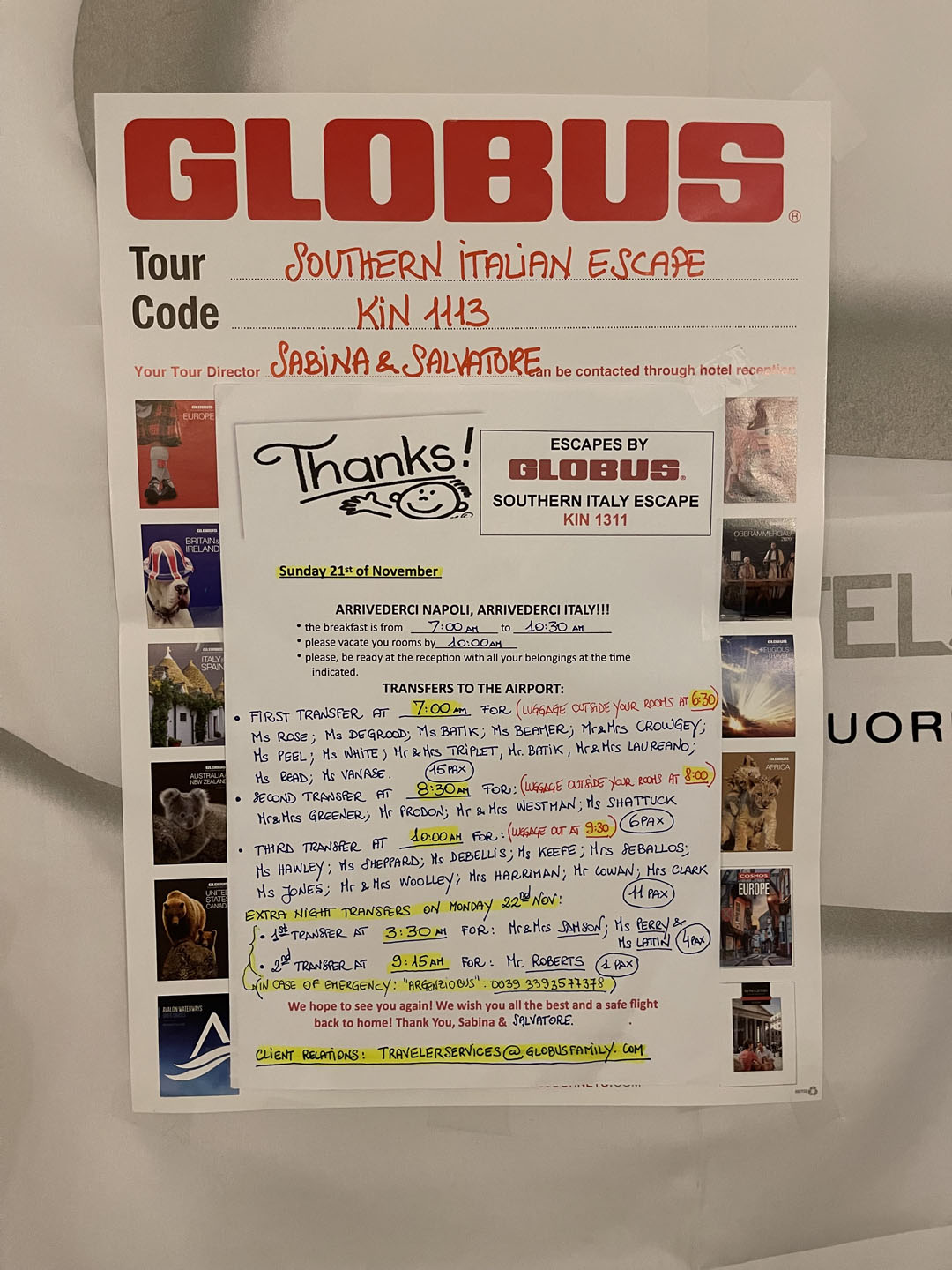

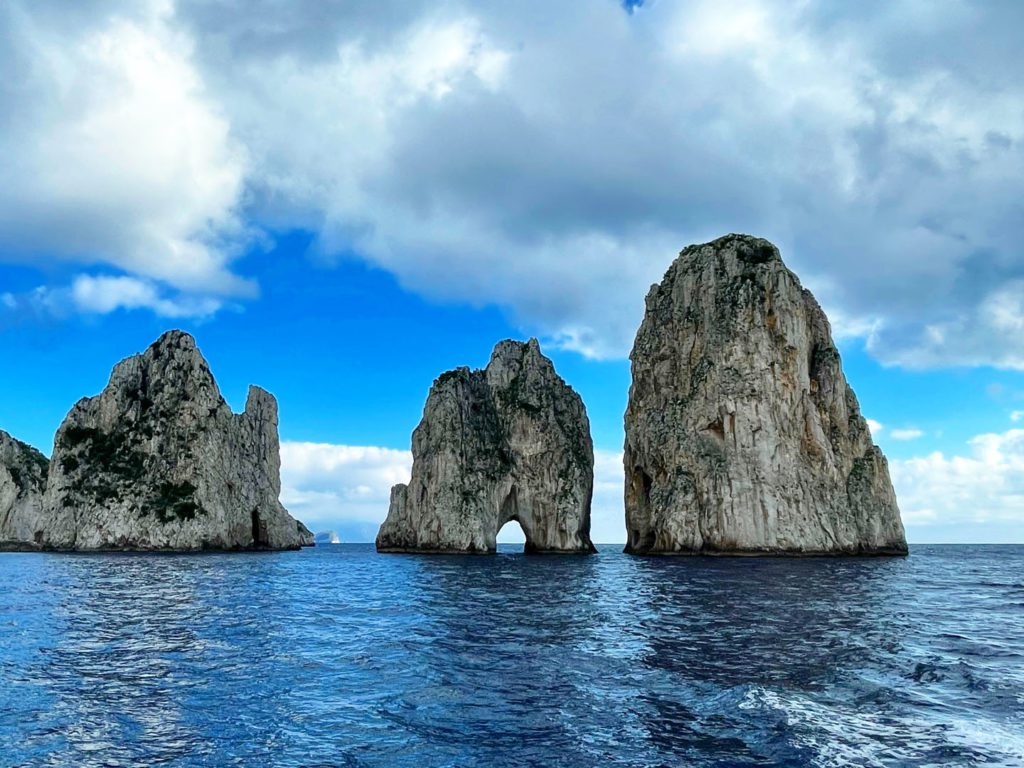
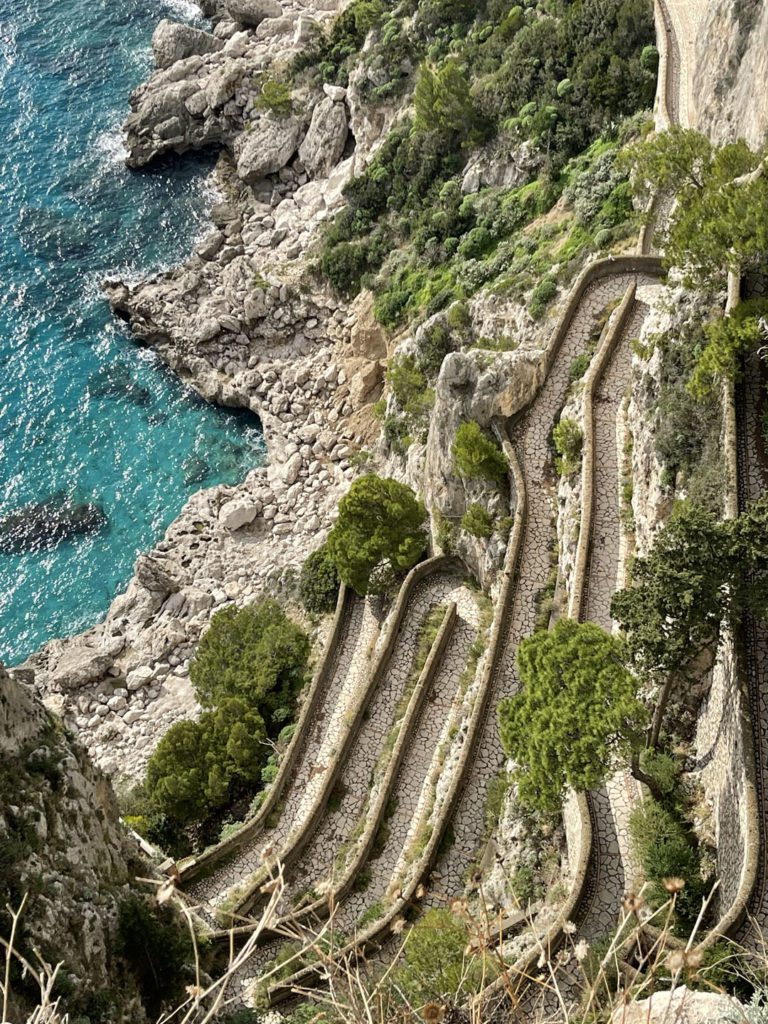
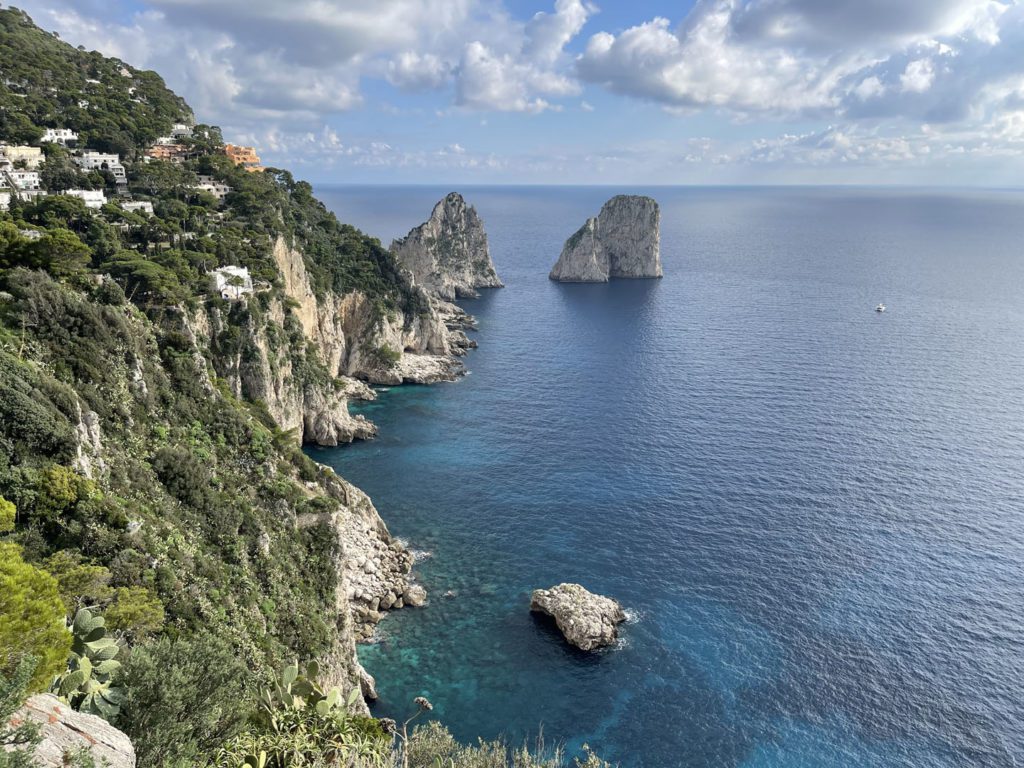
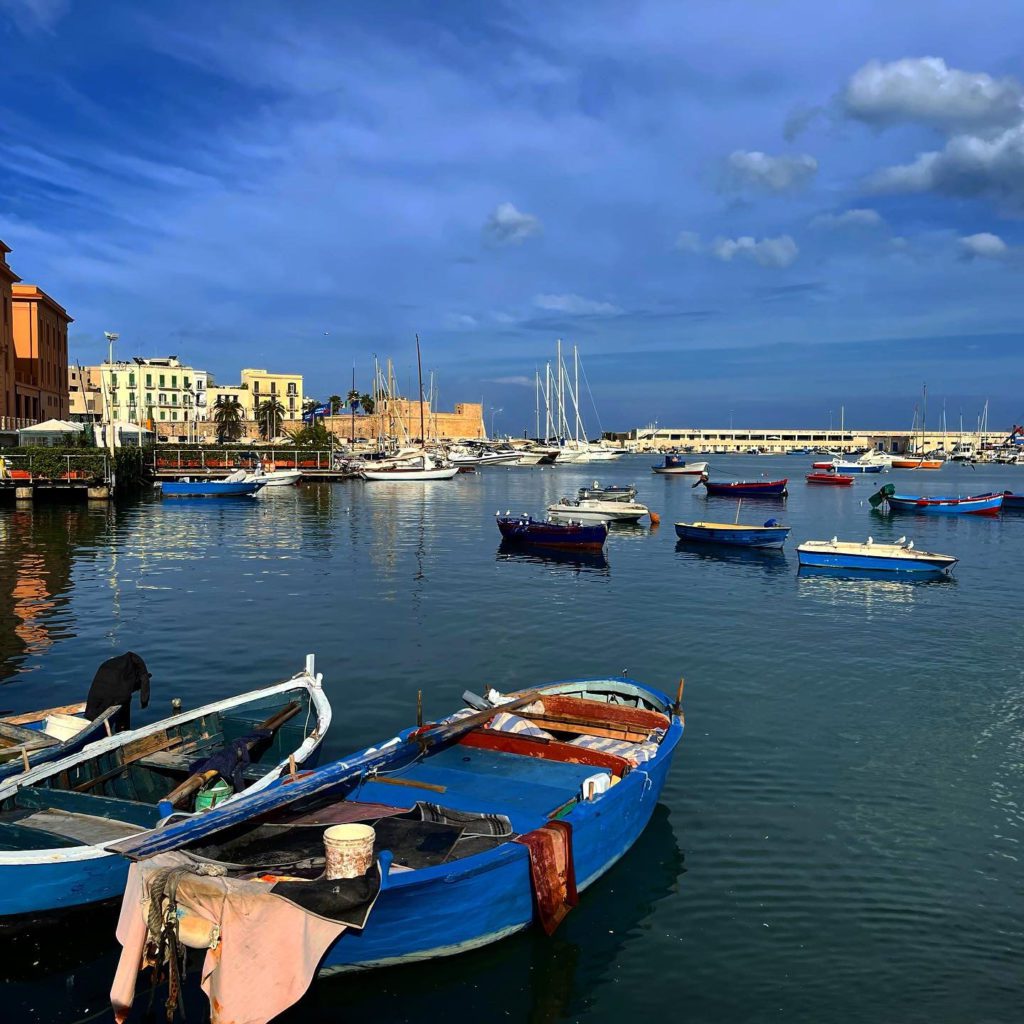
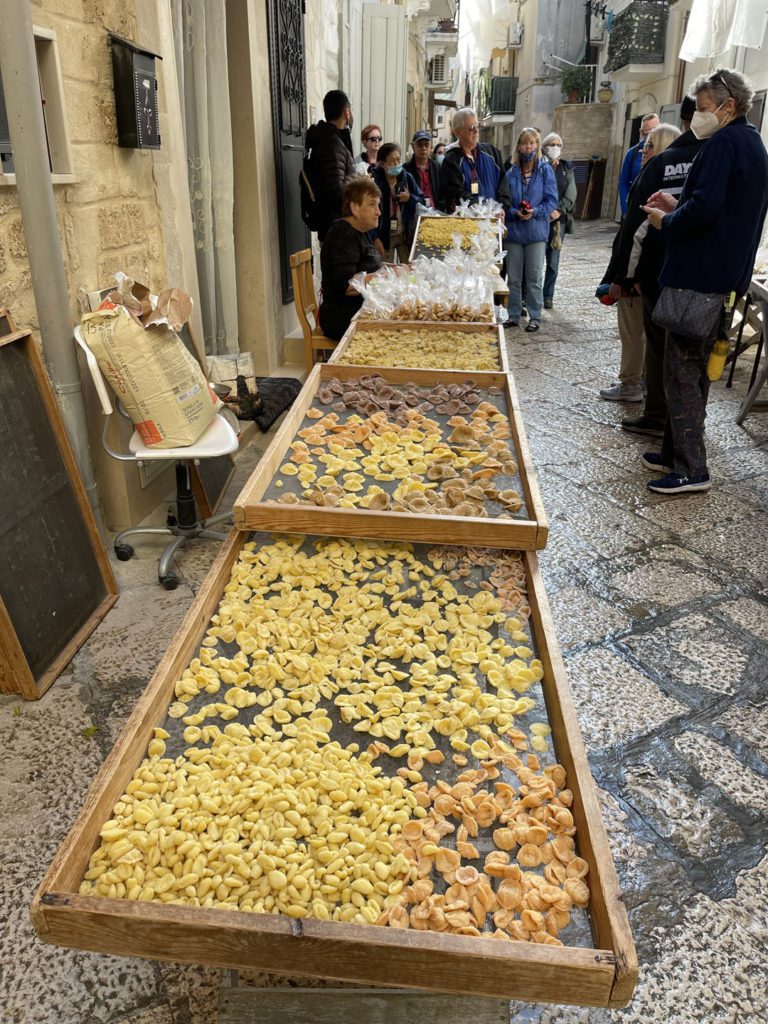
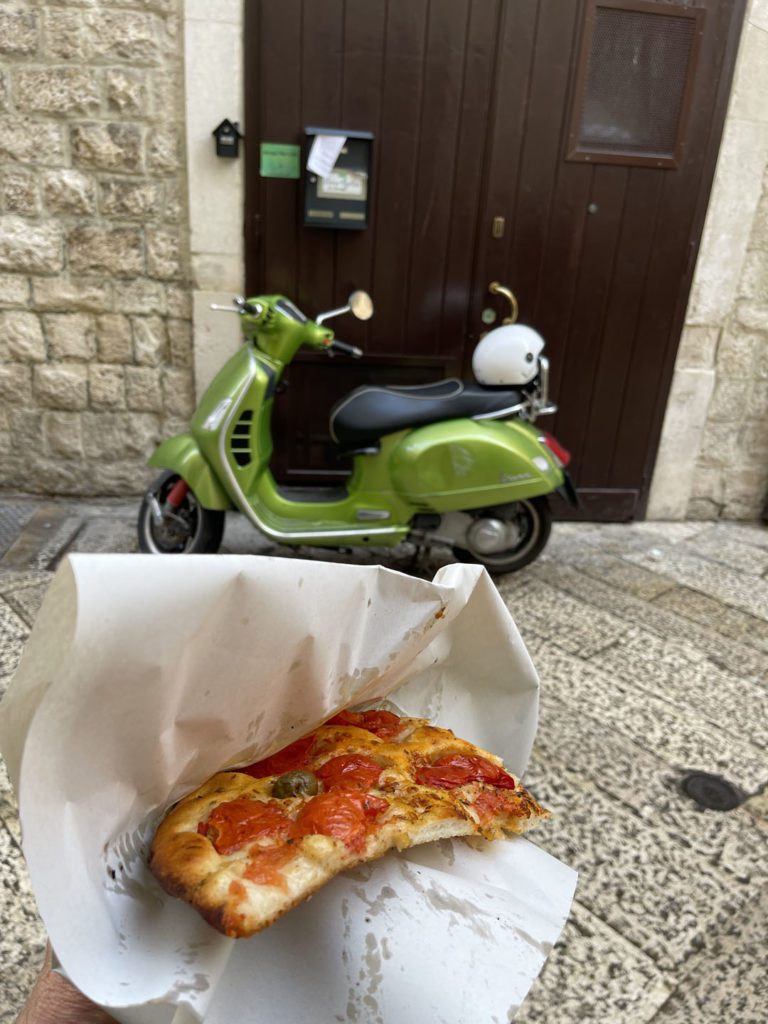
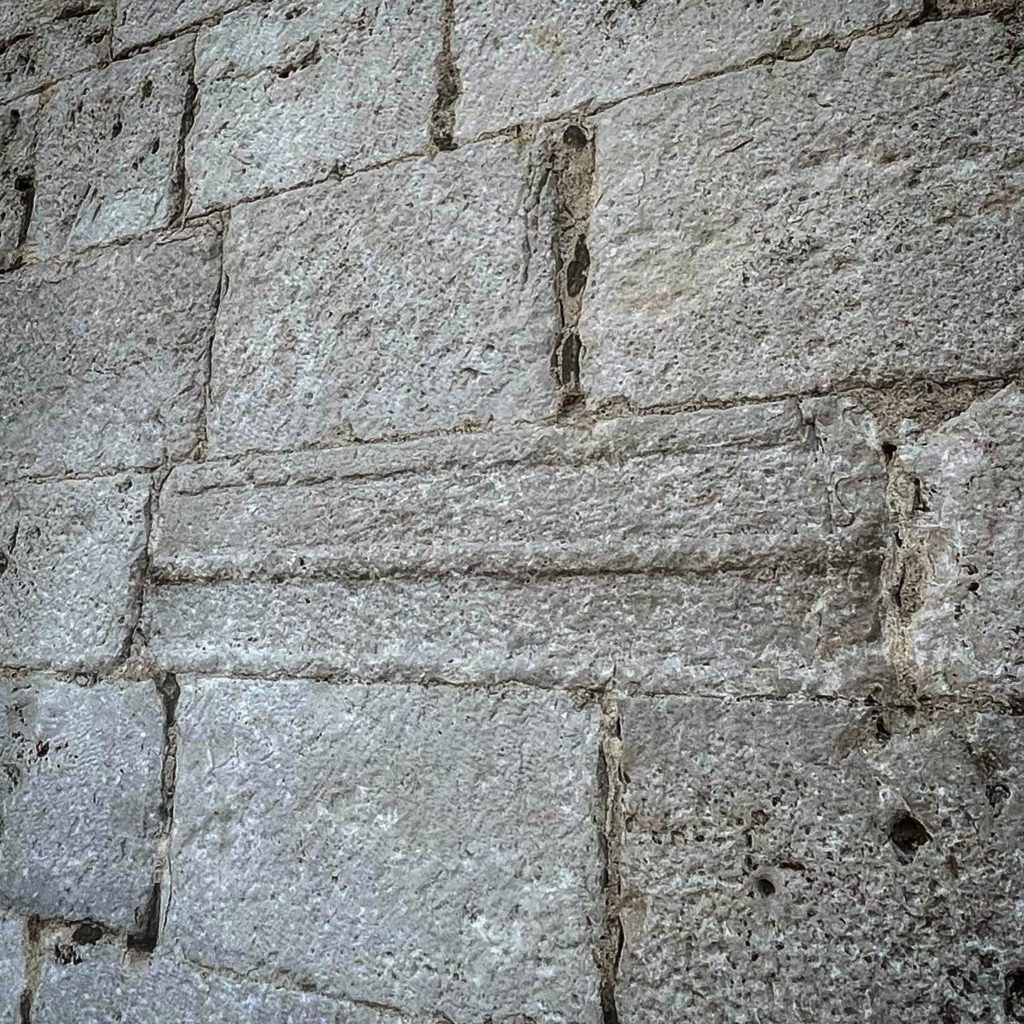
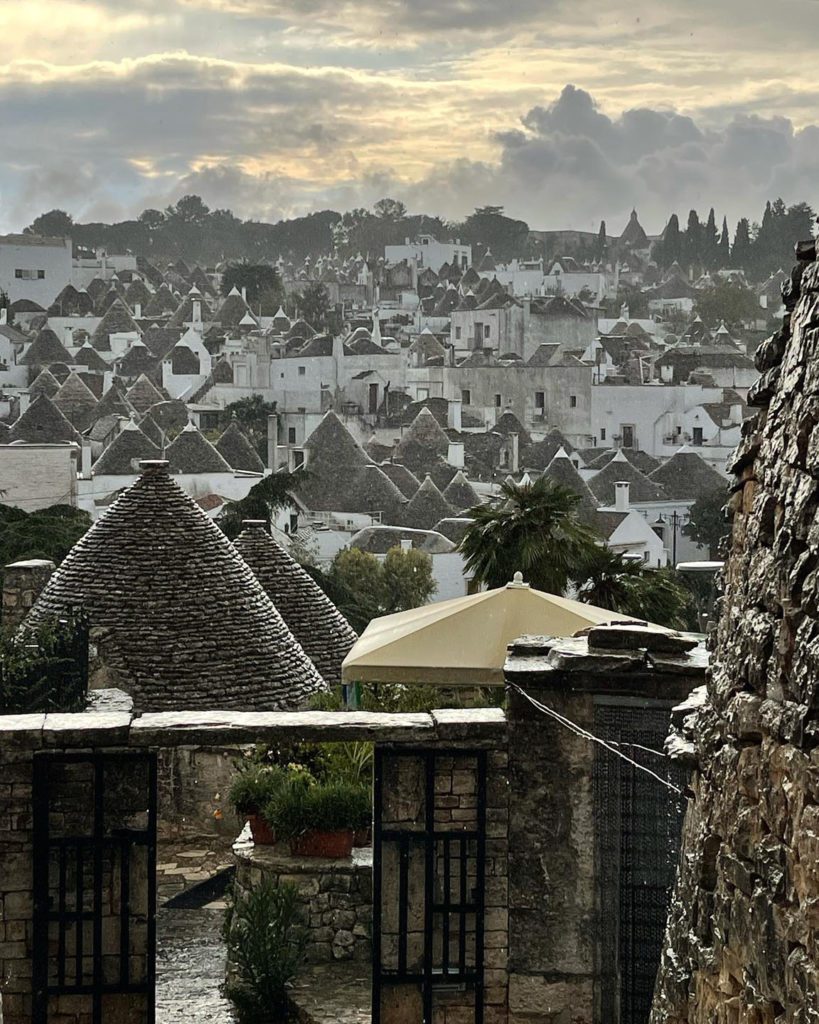
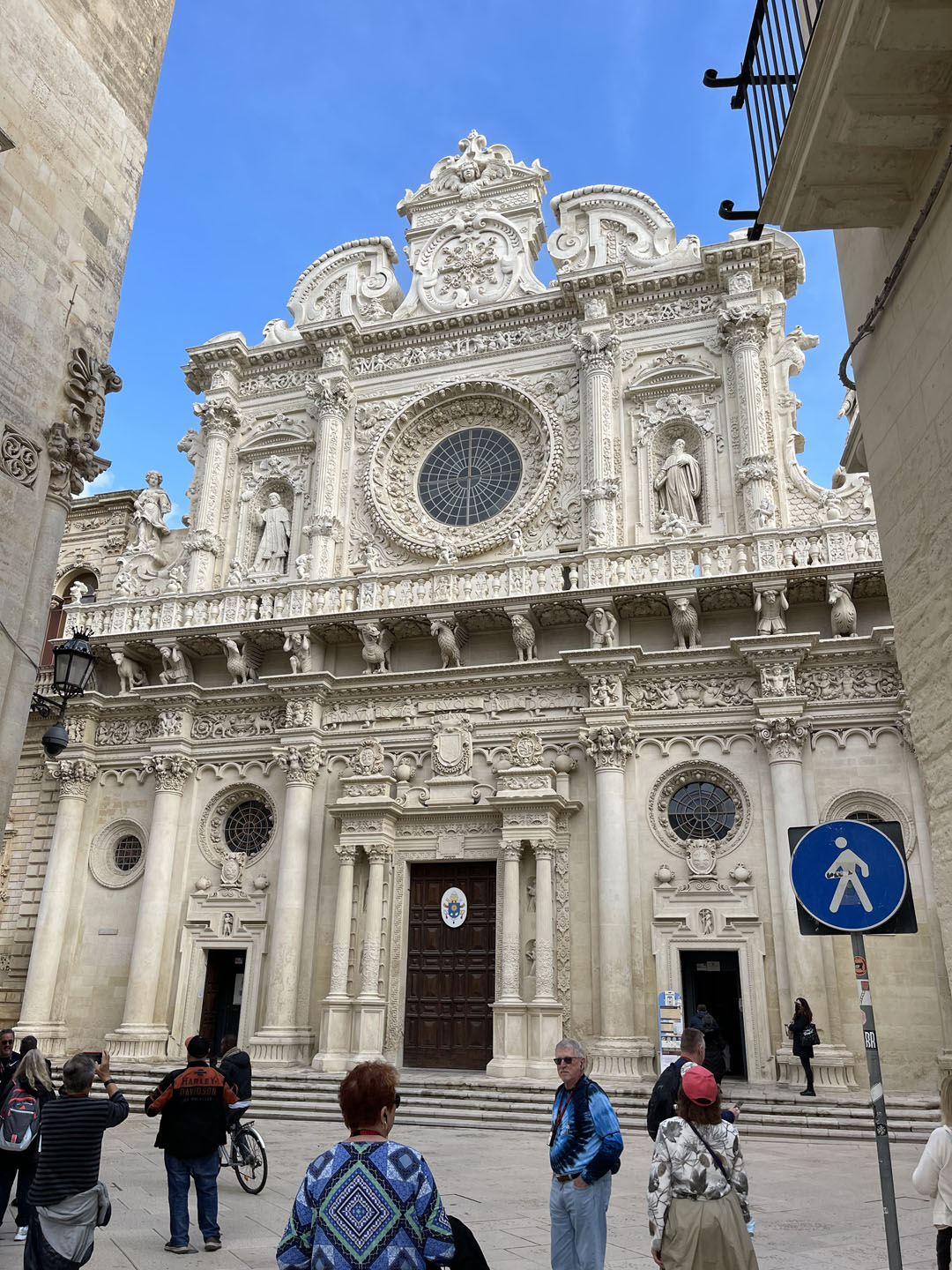
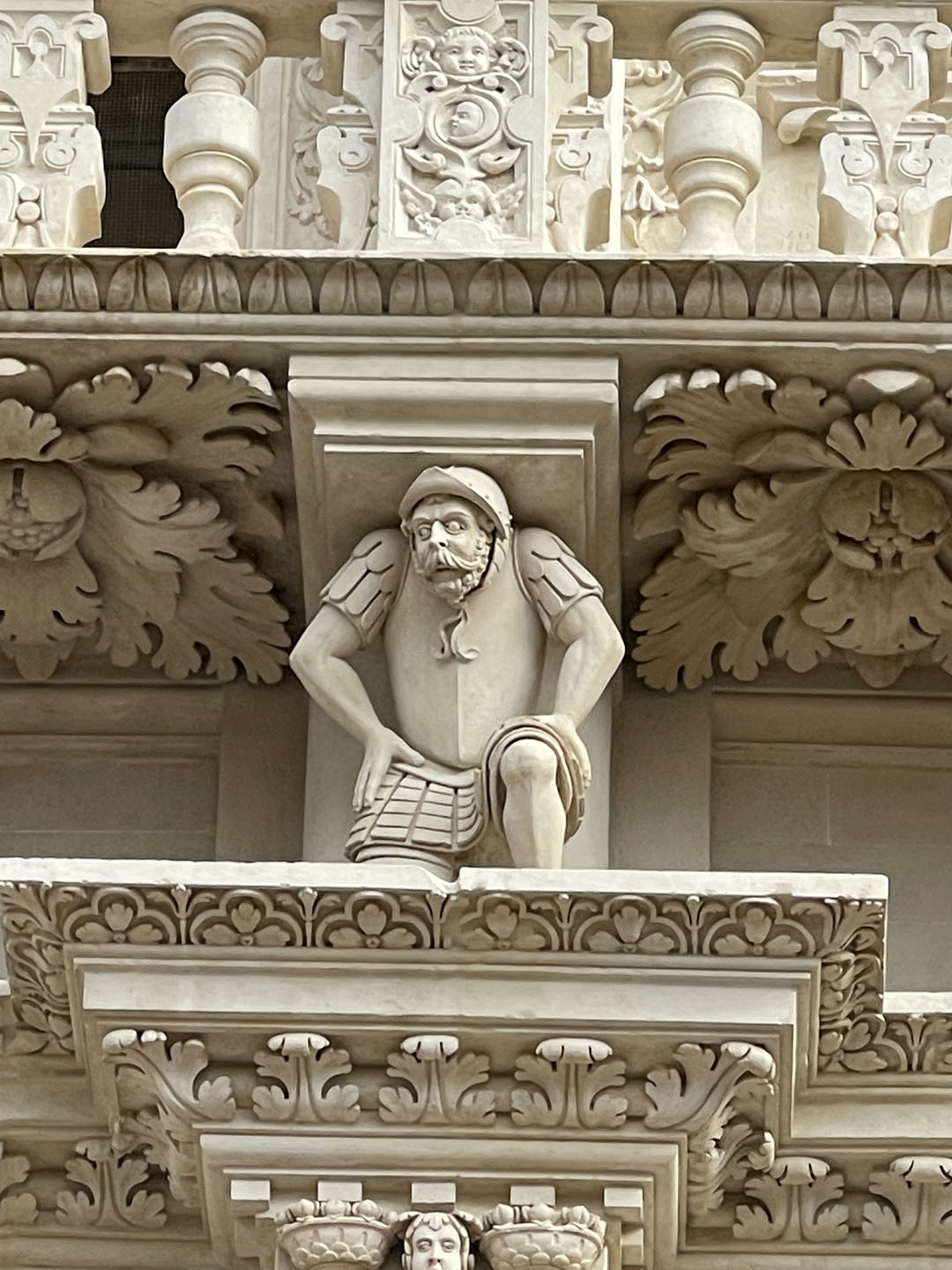
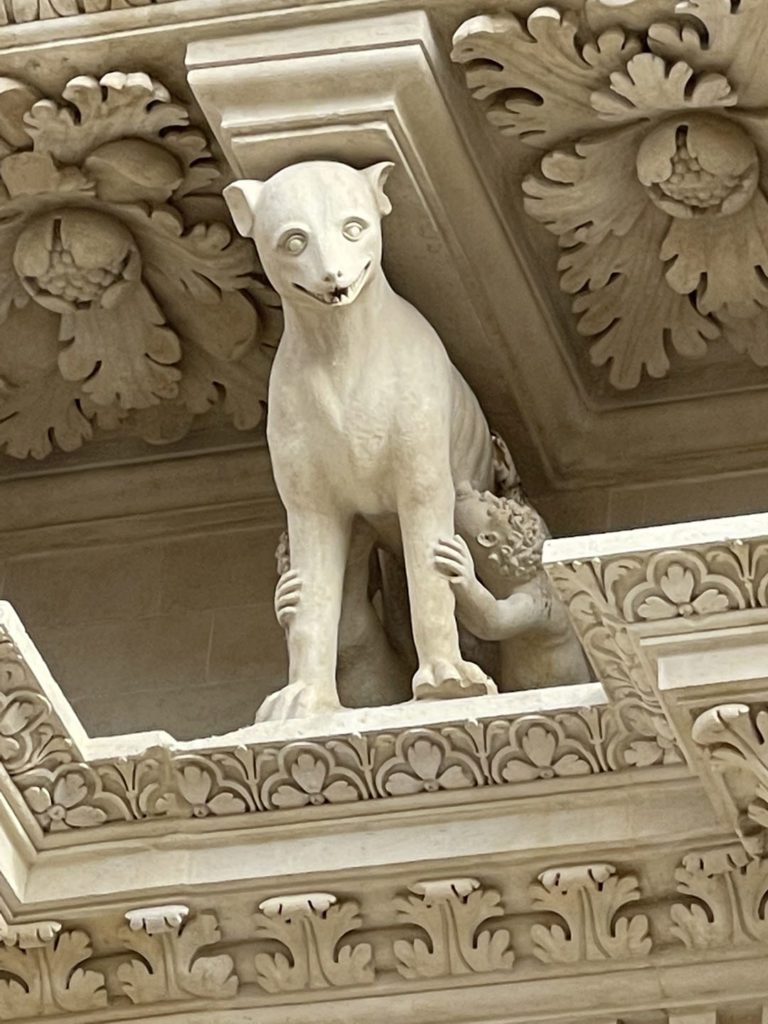
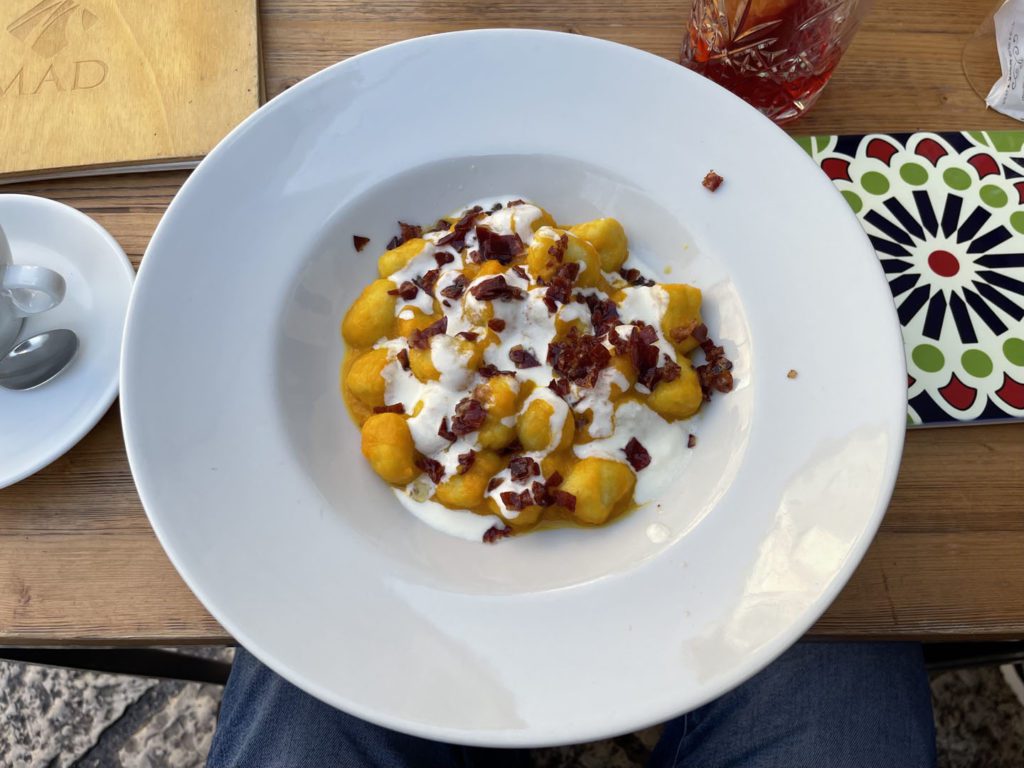
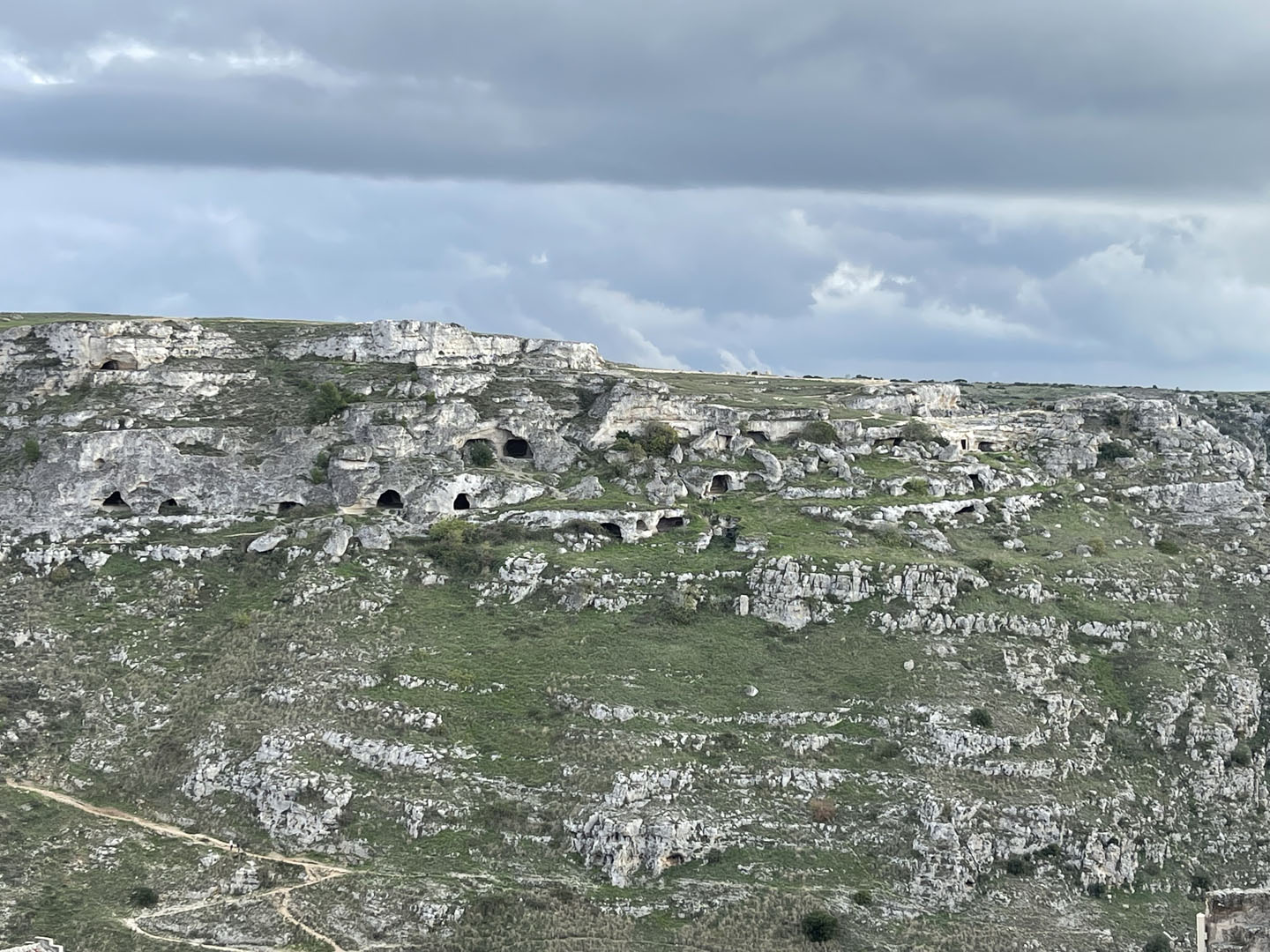
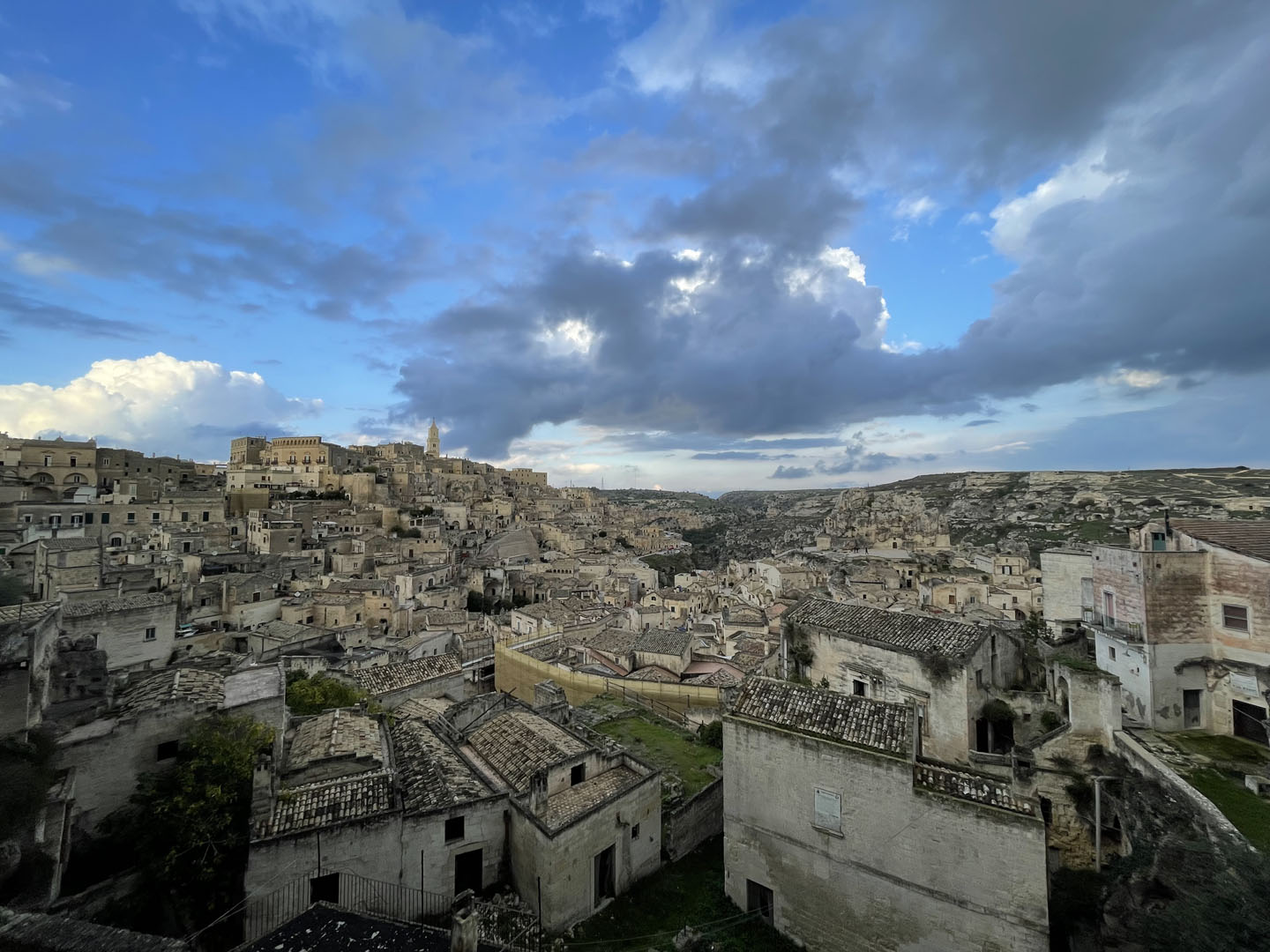
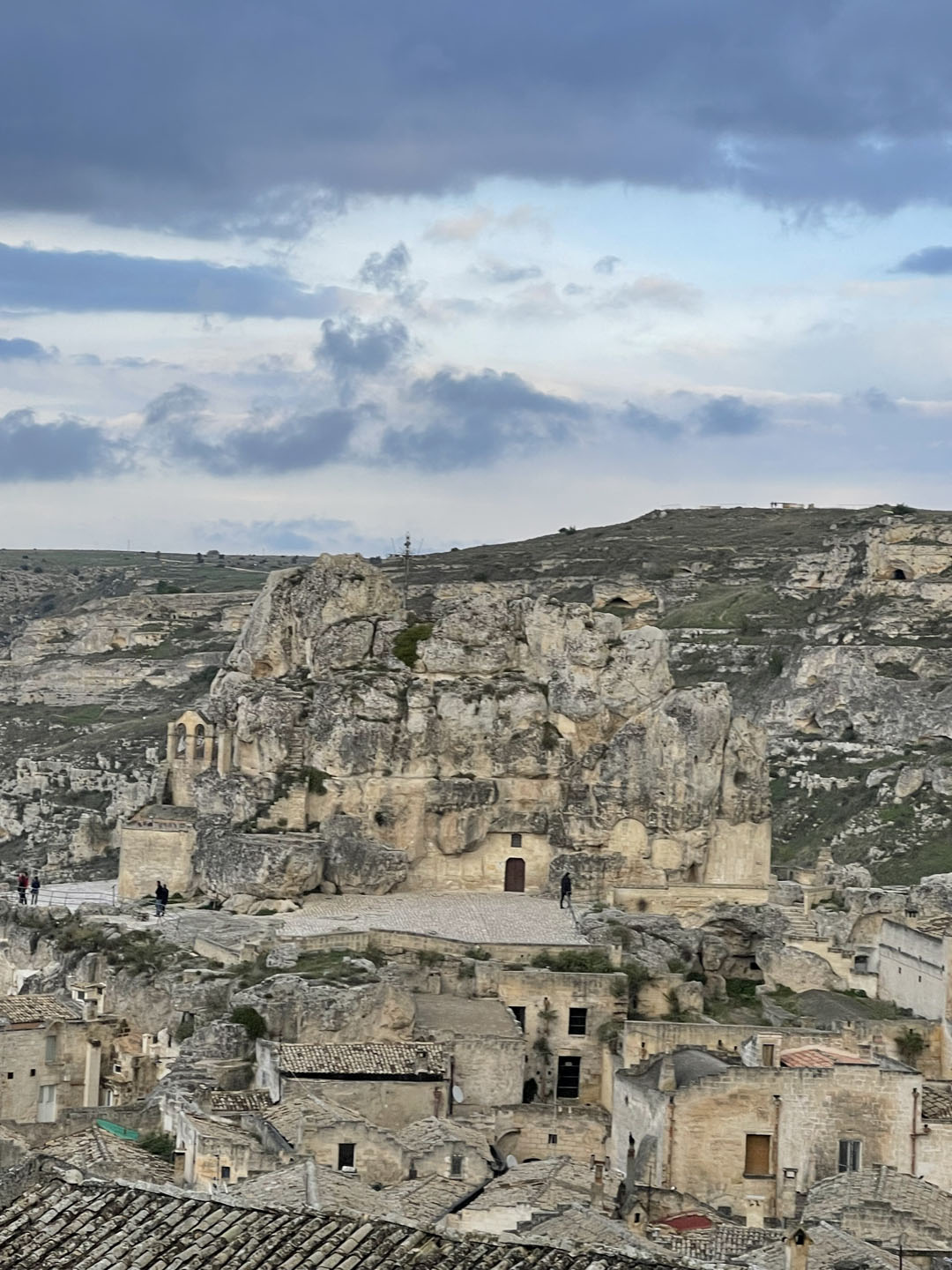
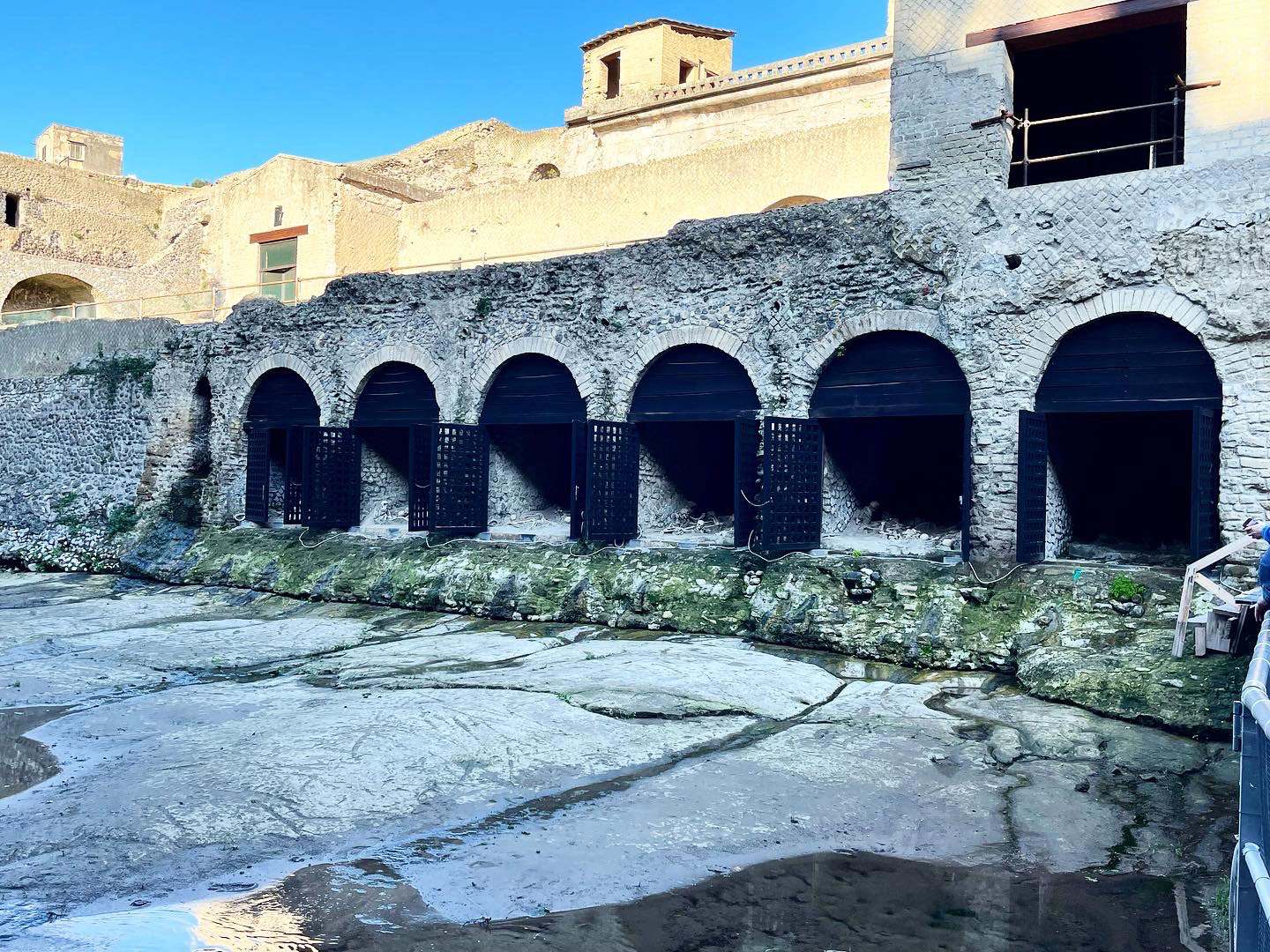
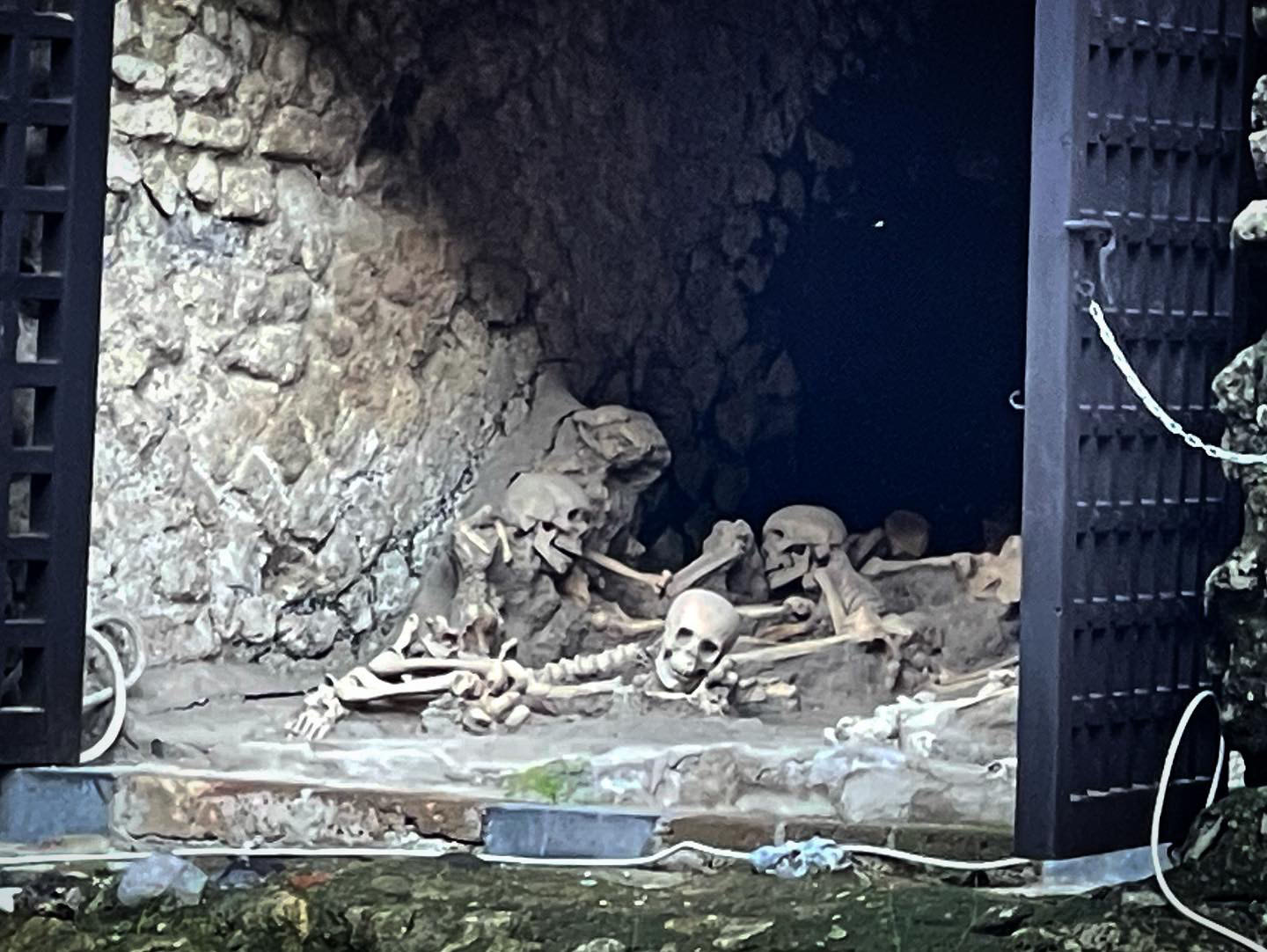
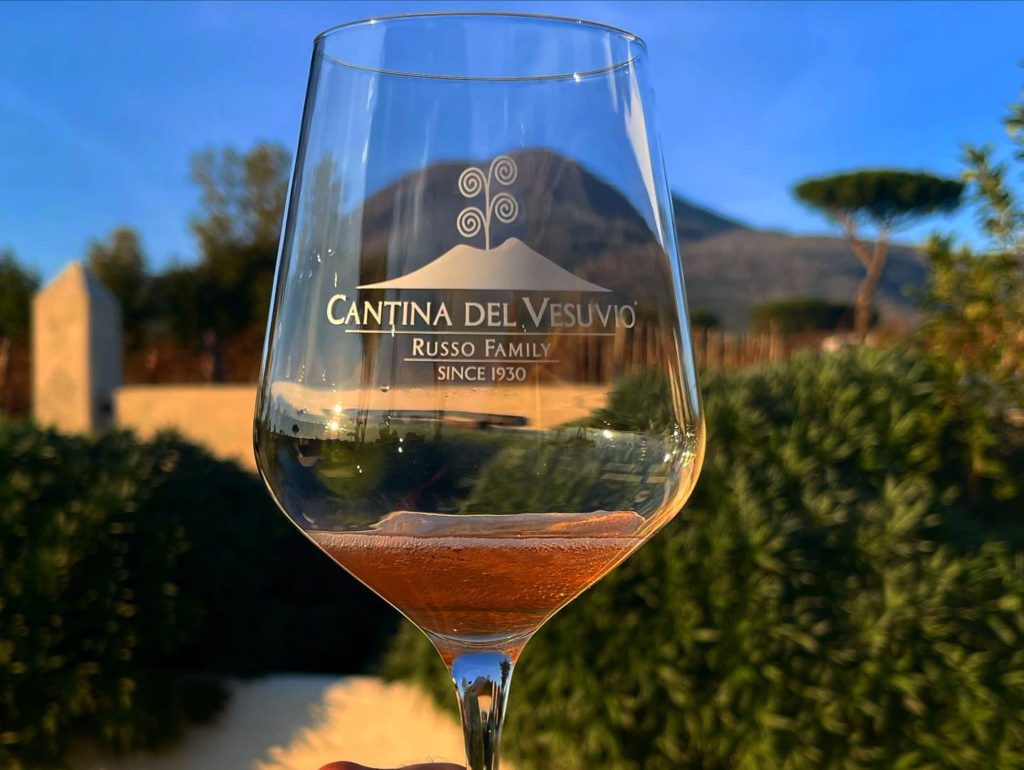
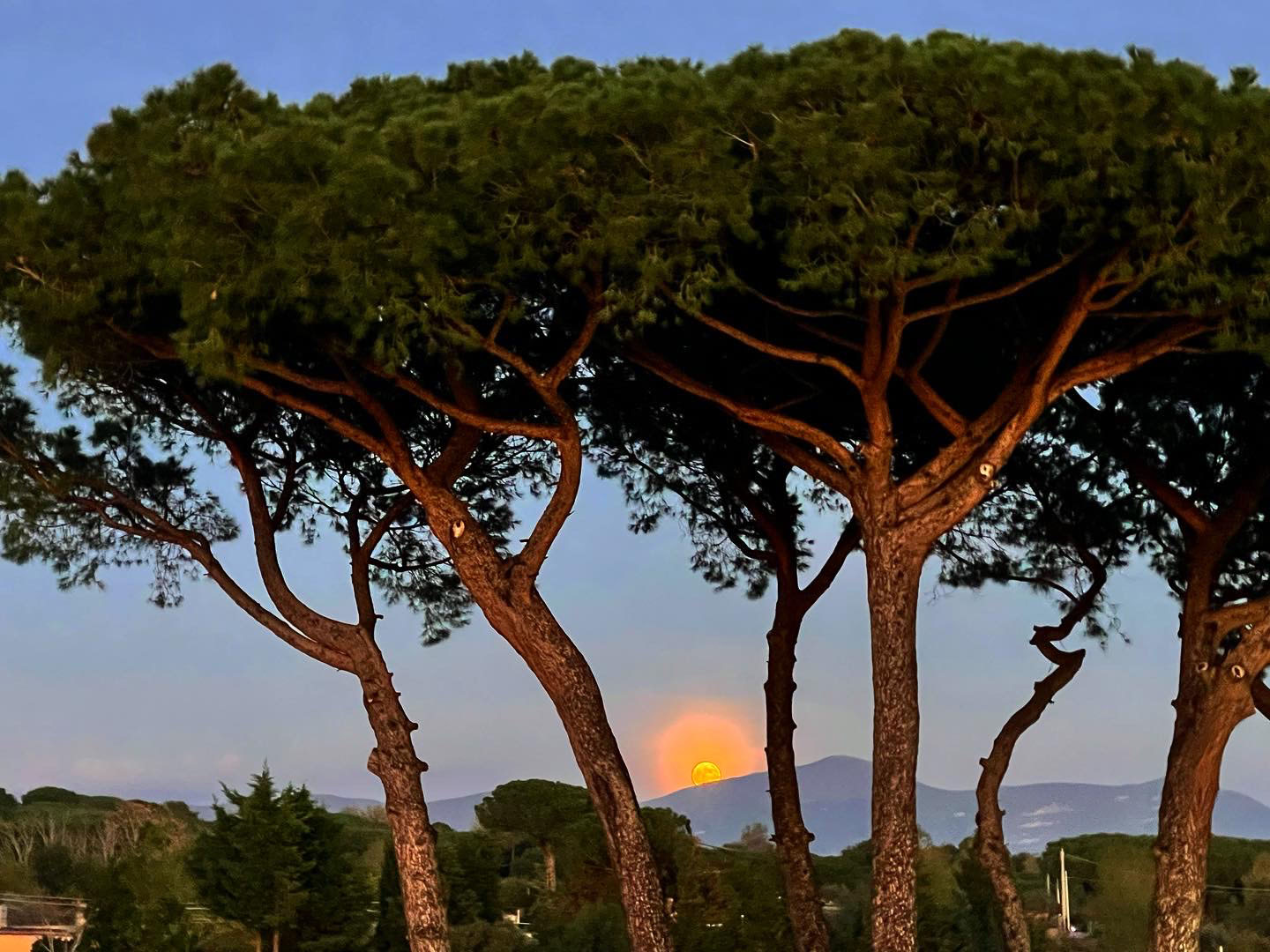
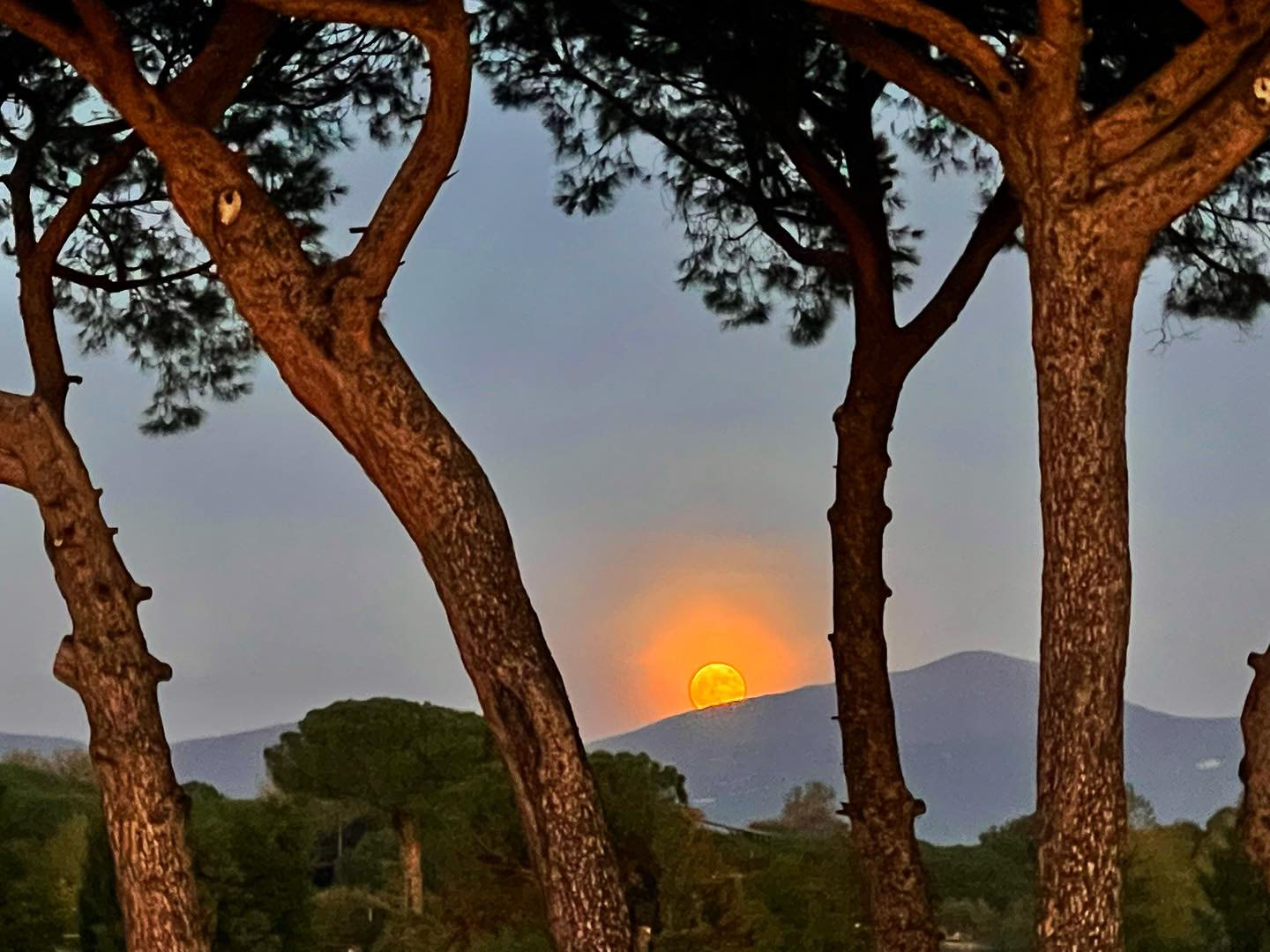
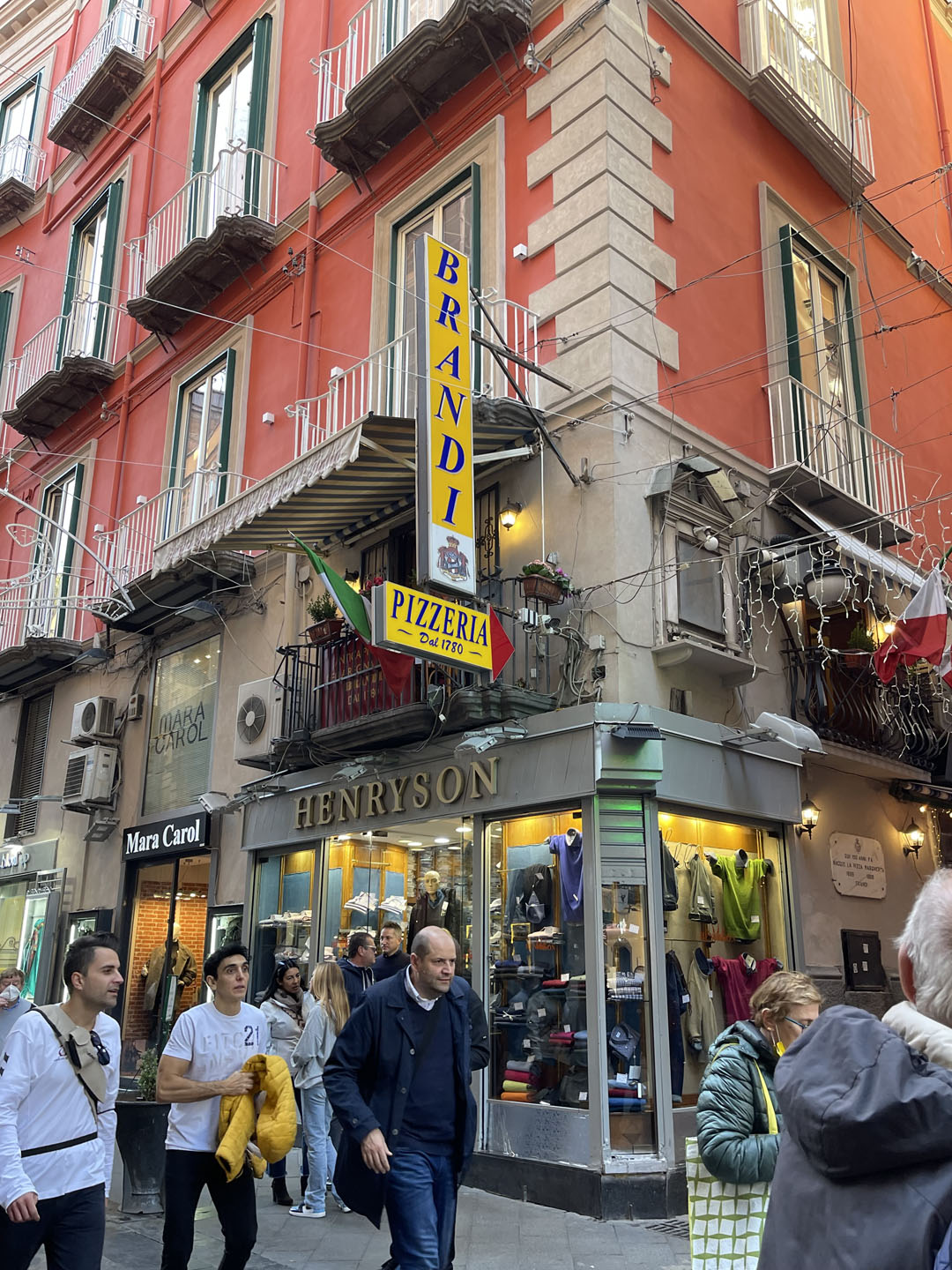

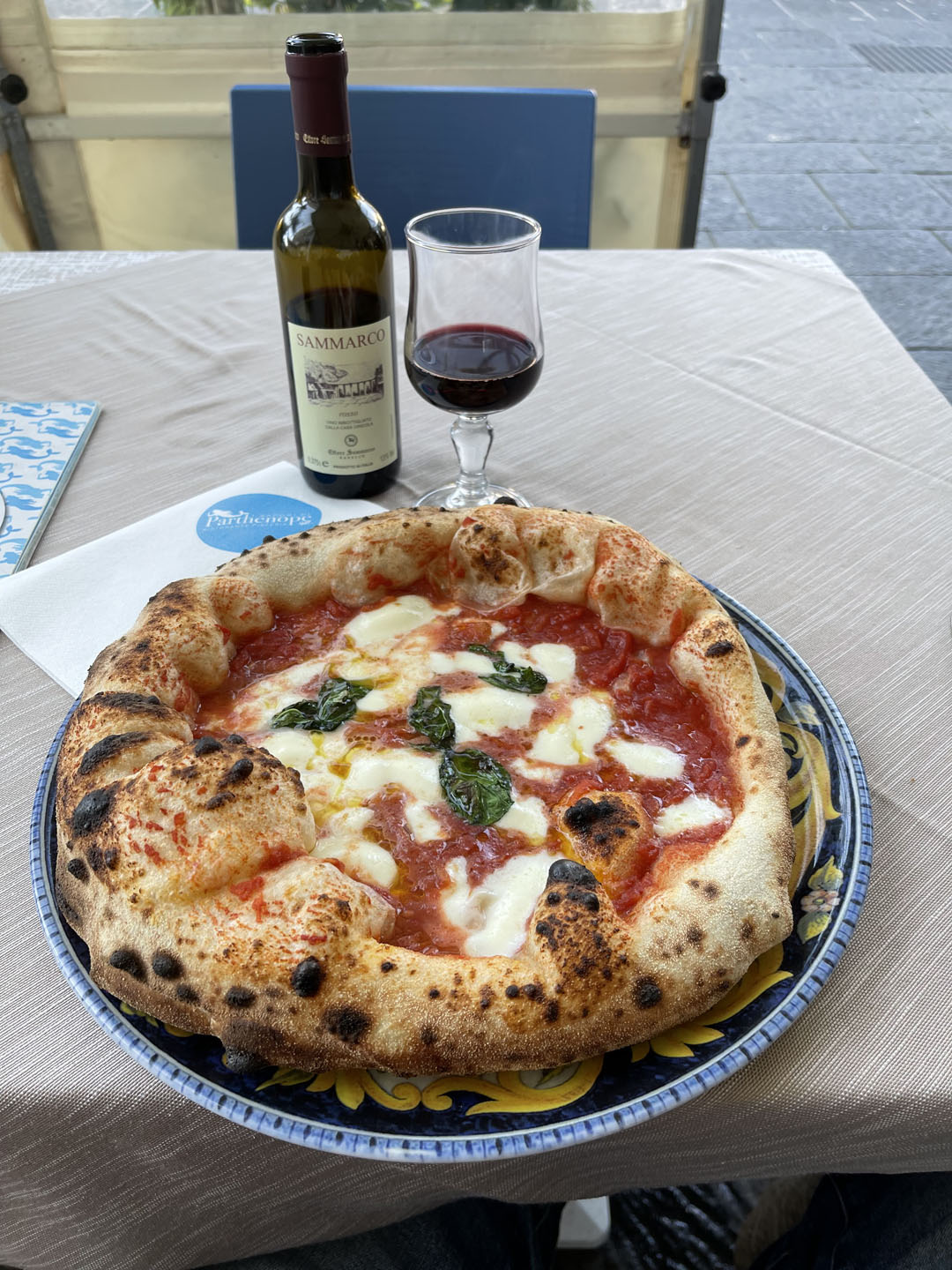
Mr. Roberts, I loved this memory of Southern Italy. I am sitting in my little reading room with a Roma Martini (I think it is the only drink I can only sip). So many details I hoped to remember you have included! I wish I had purchased the case of wine. BTW, Somewhere Over the Rainbow was my first solo. I wish I had join you in singing.
Thanks Peggy!
I could have made it so much longer.
So many pictures I took too.
Check out Instagram if you use it.
Were you there?
You can still order the wine…
Cheers!
Chuck
What a great trip. And that pizza looks really awesome. I have almost given up on finding a pizza like that in the US.
I visited the Naples Archaeological Museum and also saw the erotica room. When I was there a touring (Italian) high school came through, and I was wondering what their reaction would be. They were all, “Yeah, nothing we haven’t seen before.” No giggling and personal comments. It was clear I wasn’t in the United States.
Welcome back!
Thanks for another lovely vicarious trip! I’m quite sure the long rides, lines and stress of the plane travel would do me in.
Before a Channel. islands visit you musr read Sarah Caudwell’s “The Sirens Sang of Murder”
Ciao,
Lauren
I’ll check out the mystery.
Caudwell was a good buddy of my friend Barbara Mertz (aka Elizabeth Peters).
Travel is so stressful.
Thank you for reading and taking the time to comment!
Chuck
Pity you didn’t get to see, in Capri, Axel Munthe’s villa or, even better, Villa Lysis a beautiful villa built for the decadent, depraved and drug-addicted Count Adelsward Fersen – top man he – although there are wonderful photos of the Villa Lysis on Google. A firm friend of Nancy Cunard and the depraved Norman Douglas…I spent 10 days on Capri a few years ago and I only wish I could afford to move there. Utterly magical island and a playground for the Italian wealthy…
Thanks for reading and commenting Chaz.
It was a bit of a whirlwind but a good use of my last day.
Lots of history and beauty.
Best
Chuck
Thank you for sharing! I felt as if I took the vacation with you! Welcome home!
Thanks for writing Claudia!
It was a wonderful experience.
Travel can be hard work!
Chuck
Another great adventure shared, Thank you!
Always look forward to your post.
Tommy
Thanks Tommy.
Great to hear from you.
I’m saving bookplates…
Chuck